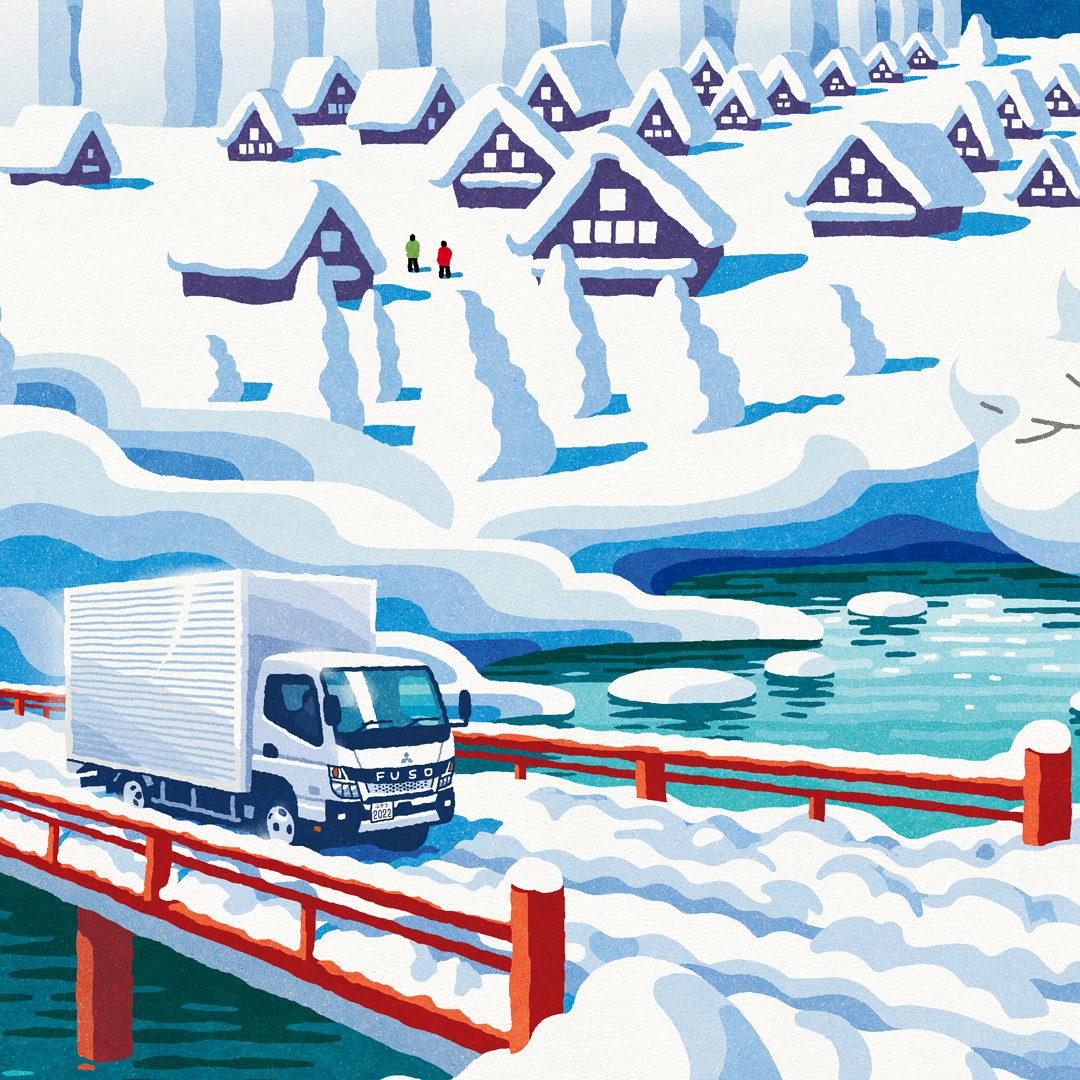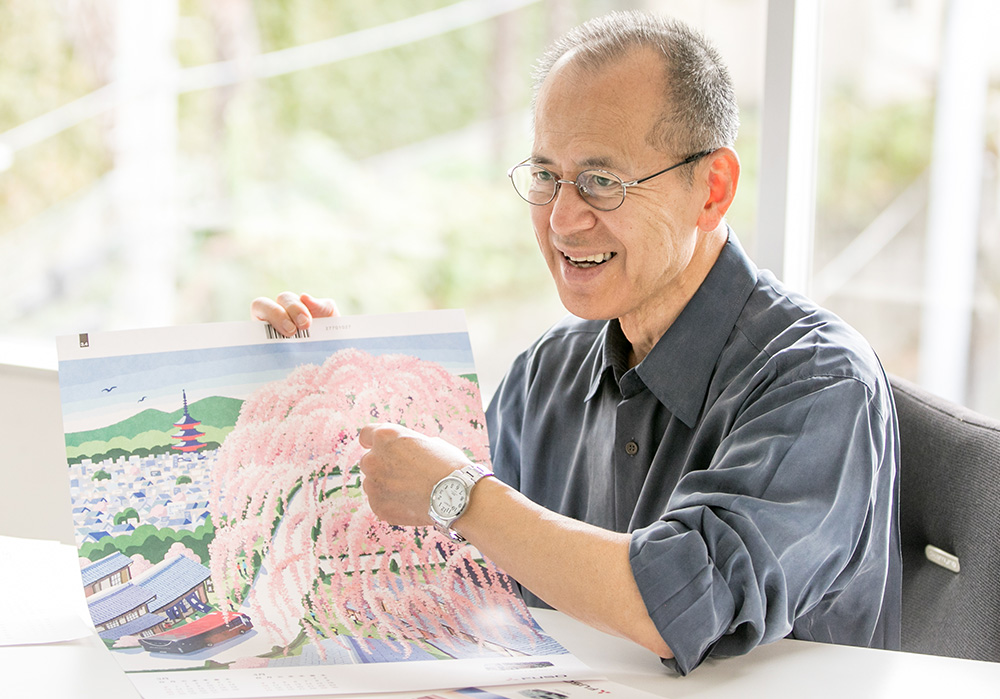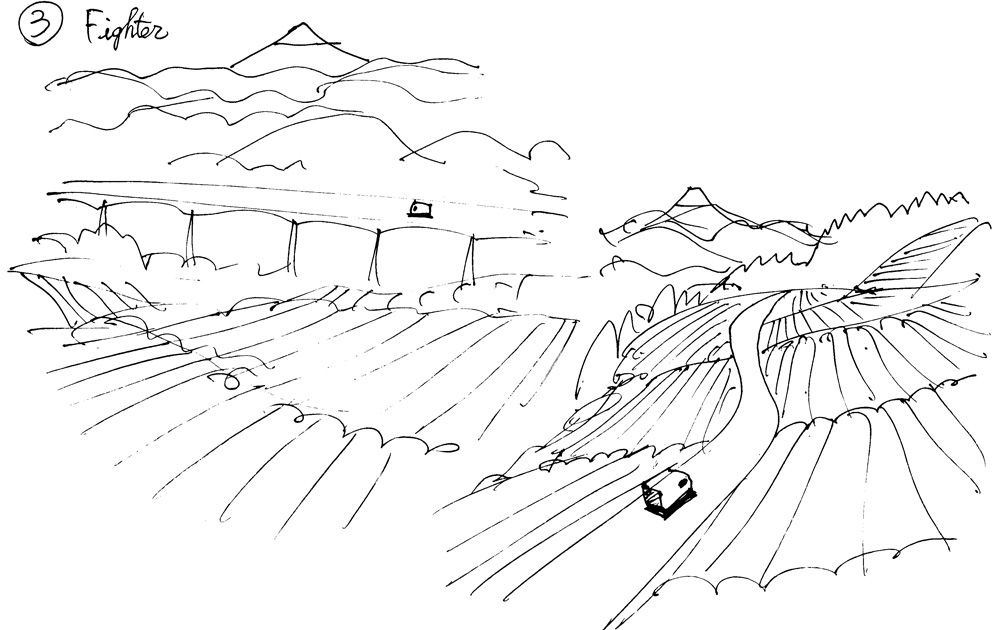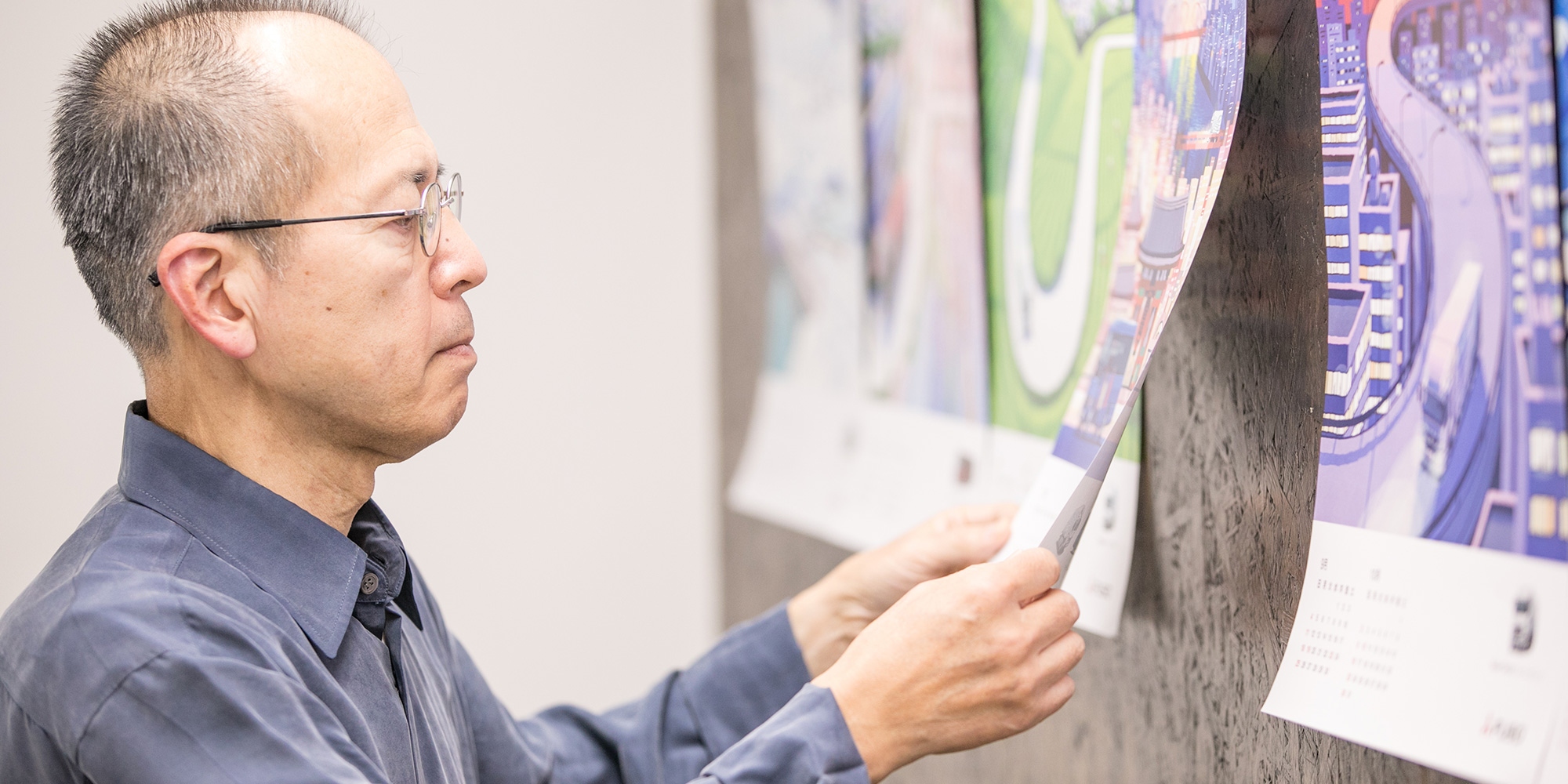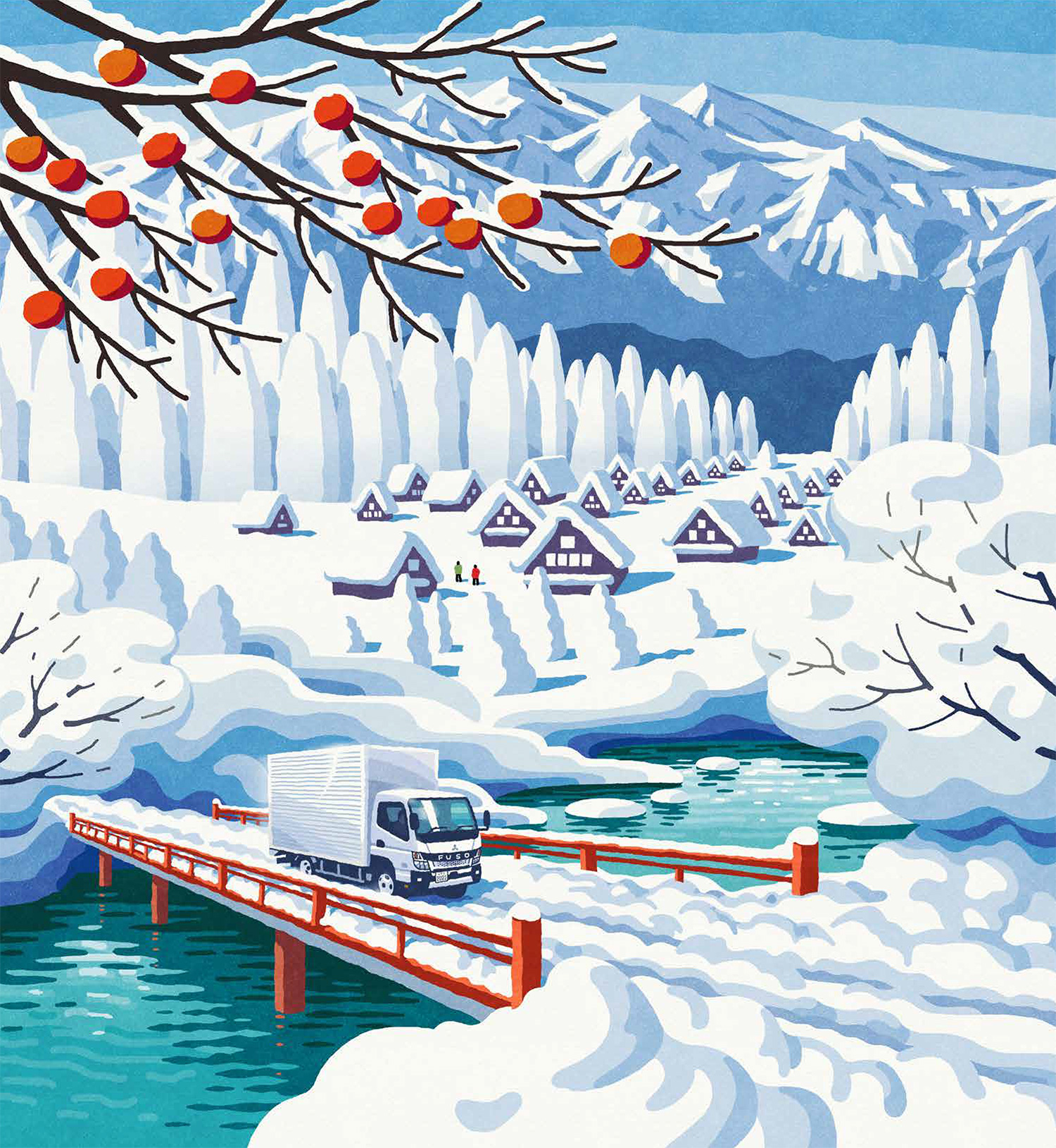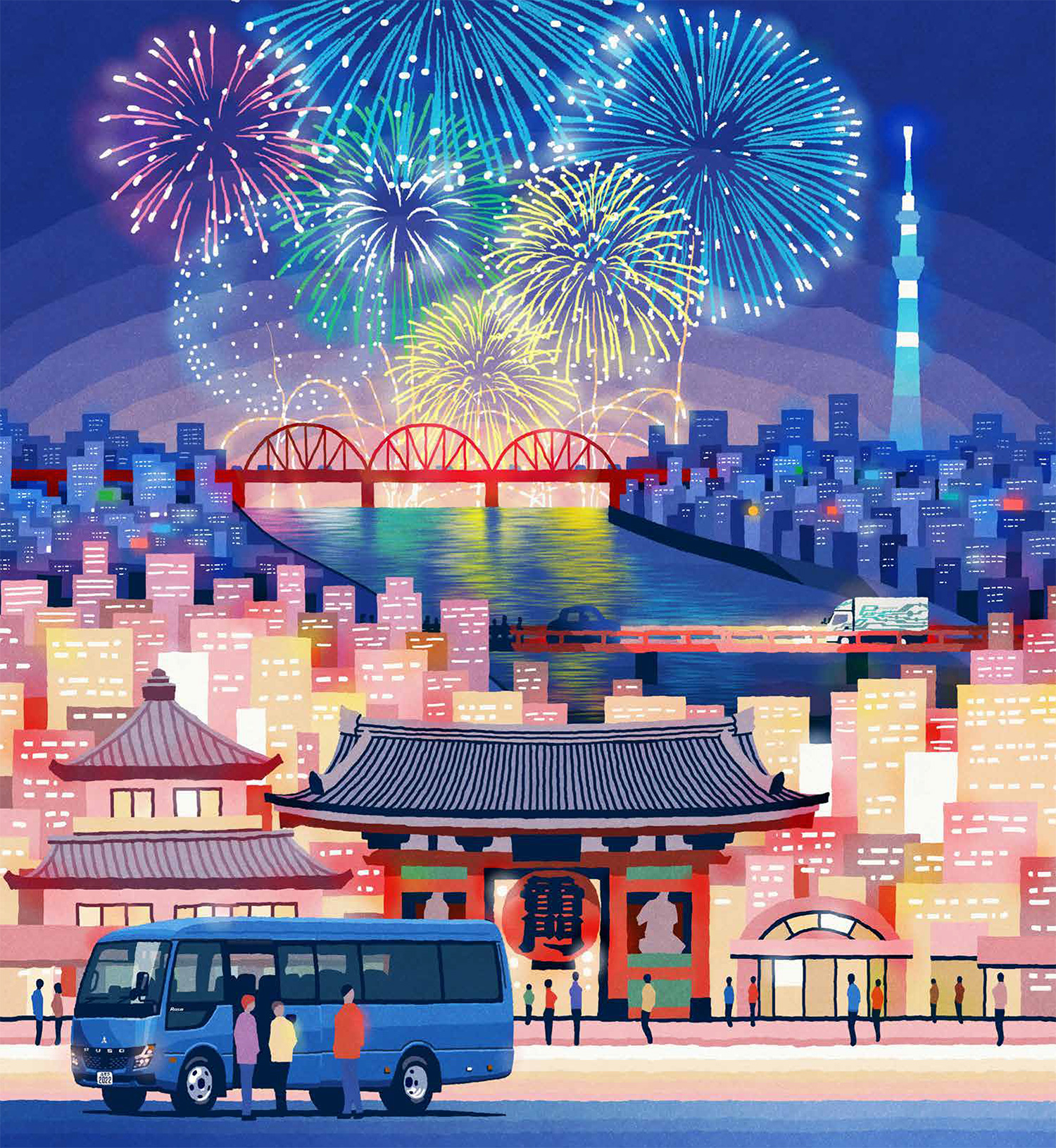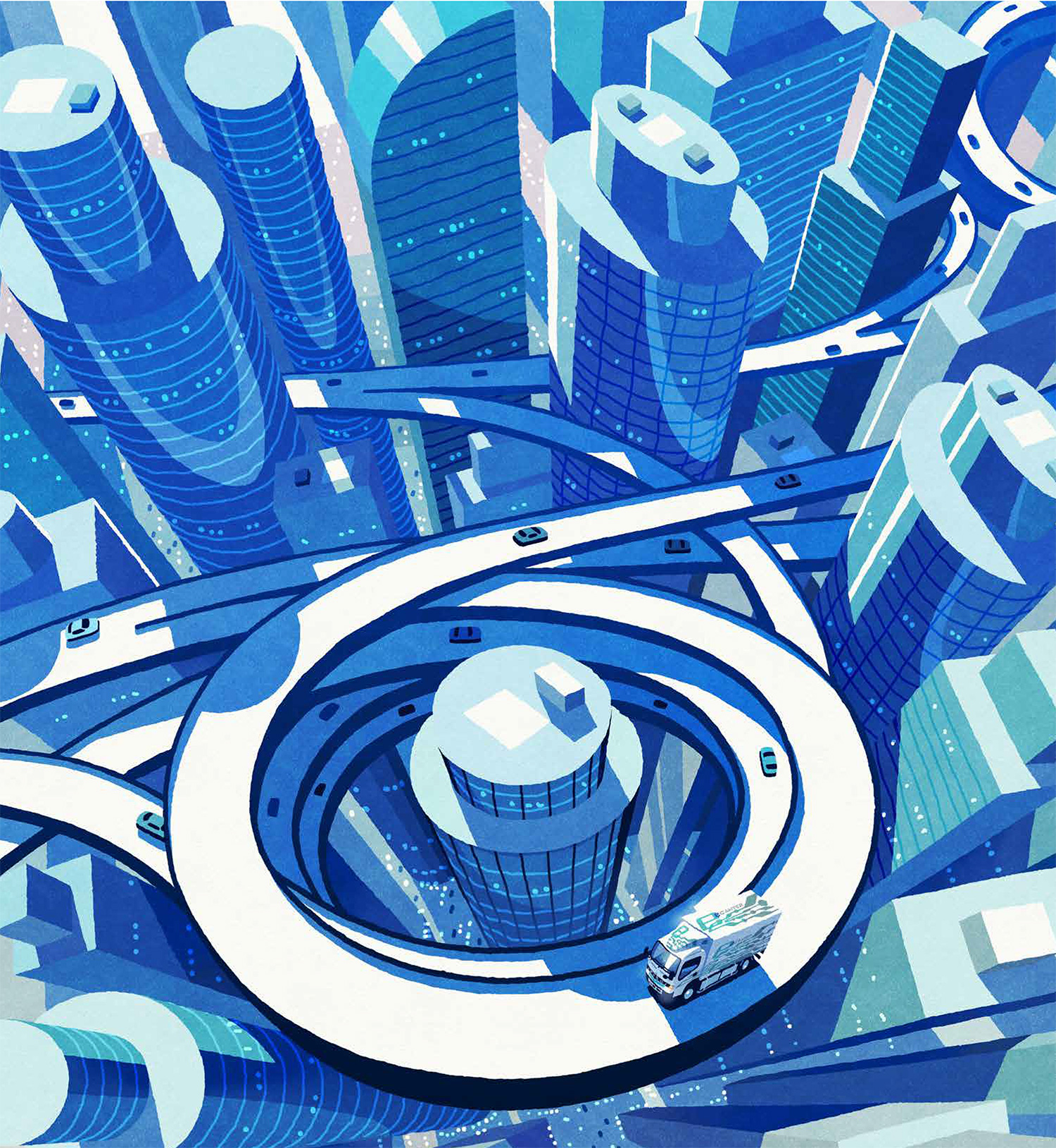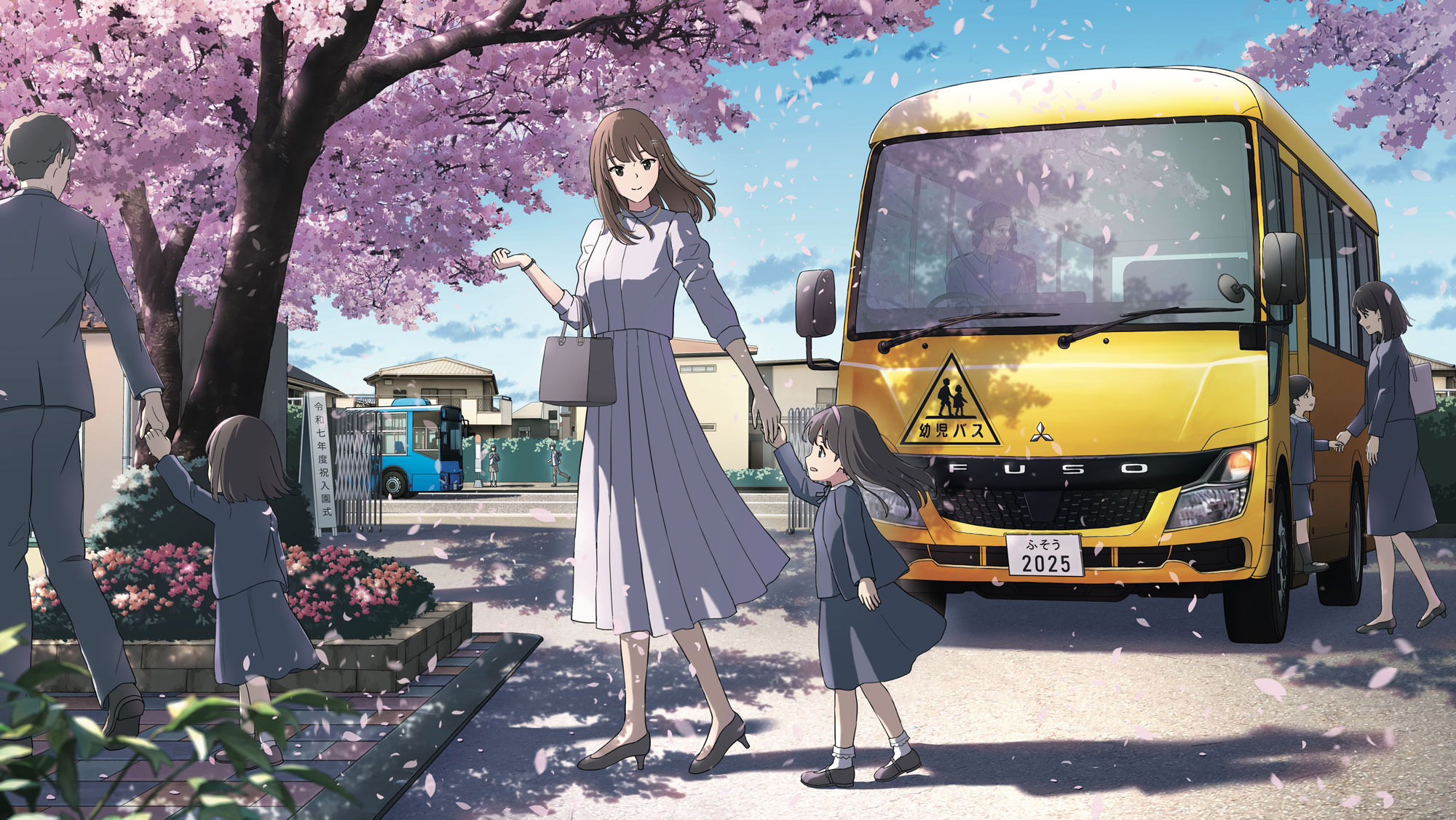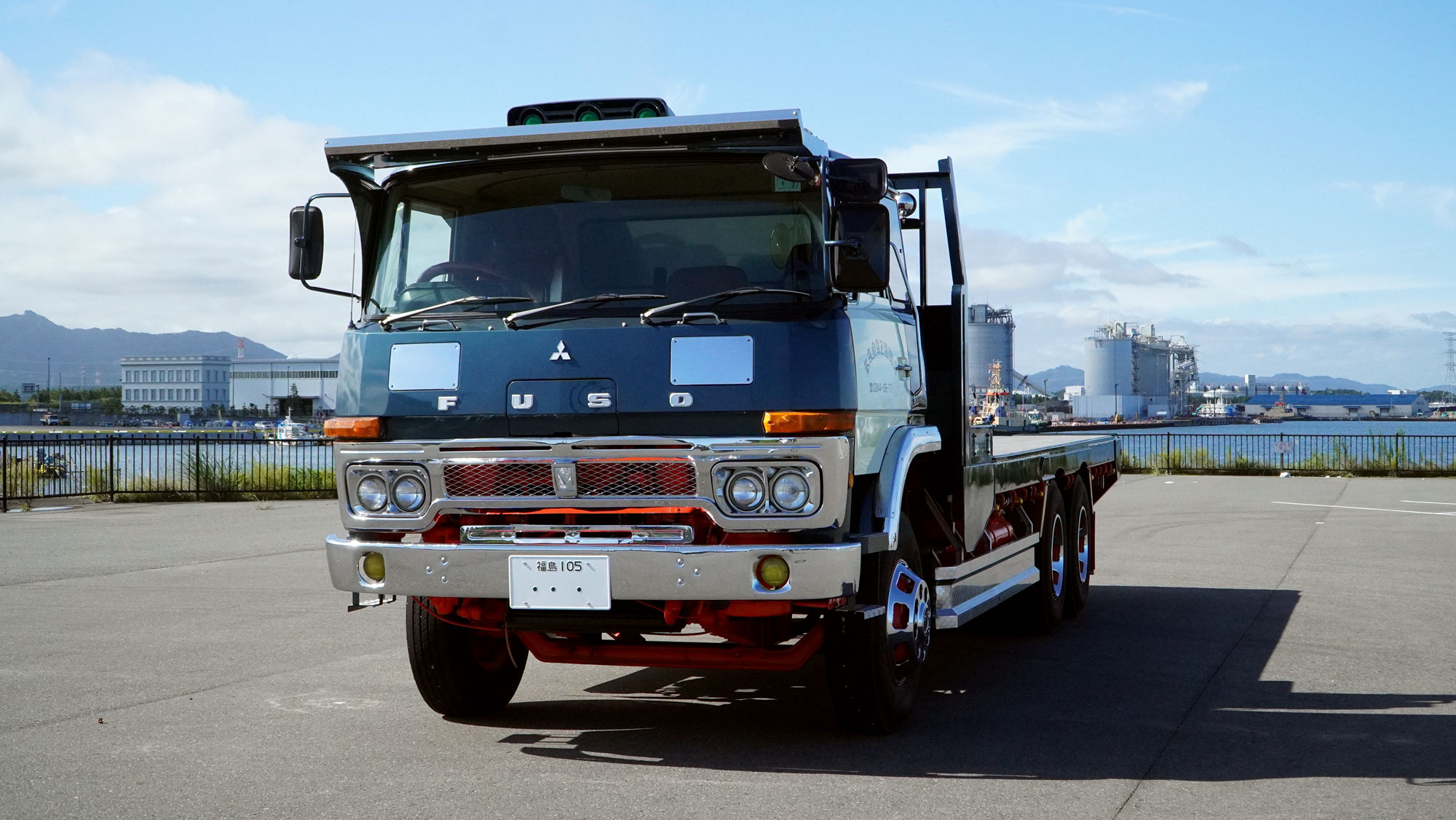
Calendars are an important part of Japanese culture. It’s a traditional gift for aisatsu, an end-of-year greeting, where companies meet with their clients (often in person – pre-COVID) to reconnect and reflect on the year coming to a close. FUSO’s 2022 calendar reflects its deep roots in Japan and its ambition for the future. Its pages are adorned with vibrant illustrations of Japan’s cityscapes and countryside, with connected roads in which FUSO vehicles proudly roam.
These illustrations delicately balance reality and fantasy, pulling us into an exciting, almost dream-like world. How does alluring art like this come about? We talk to the artist, Kenji Aihara to find out, stepping into the mind of the artist.

